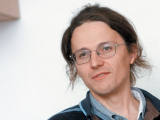Abstract: The magnetic materials might be sub-divided into the three major classes that requires special approaches and has specific problems, but also allowing for specific simplifications. This classes are magnetic insulators, 4f-metals with high degree of the magnetic moment localizations and d-metals and intermetallic compounds and alloys. For the first classes an important role of the correlation effects are evident, but quantum Heisenberg model with some modifications provide robust description of the finite temperature magnetic properties. The class of the d-metallic...



